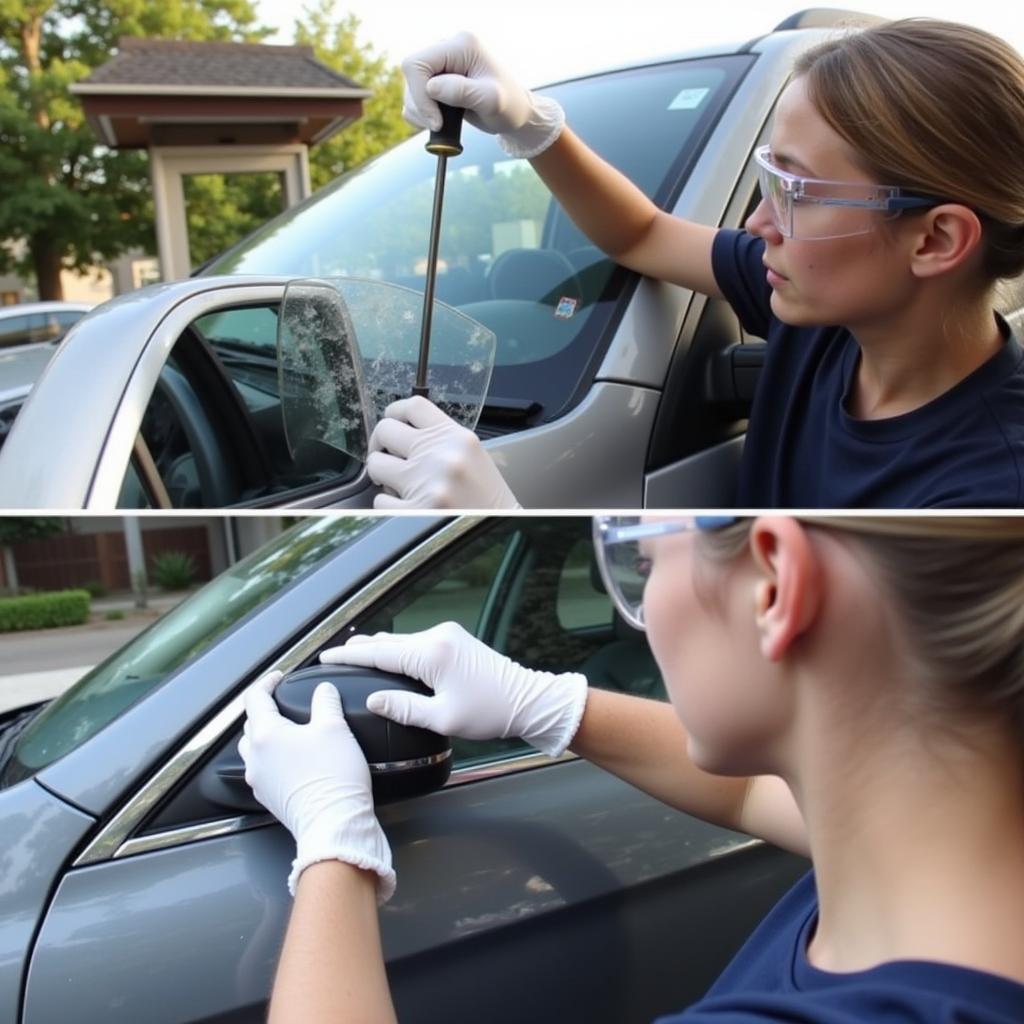Fixing A Water Pump In A Car can seem daunting, but with the right guidance, it’s a manageable task for DIY enthusiasts and seasoned mechanics alike. This guide will walk you through the process, from diagnosing the problem to successfully replacing the water pump.
Is your car overheating? Are you hearing strange noises from under the hood? These could be signs of a failing water pump. A faulty water pump can lead to serious engine damage, so addressing the issue promptly is crucial. Let’s dive into how to tackle this essential car repair. car engine fix
Identifying a Failing Water Pump
How can you tell if your water pump needs fixing? Several key indicators suggest a potential problem with your car’s cooling system, often pointing towards the water pump.
- Overheating: A consistently overheating engine is the most common symptom. Your temperature gauge will climb into the red zone, and you may see steam rising from under the hood.
- Coolant Leaks: Look for puddles of coolant under your car, especially after it’s been parked for a while. Leaks can originate from the weep hole on the water pump, indicating seal failure.
- Whining Noises: A high-pitched whining or grinding sound coming from the front of the engine, often increasing with engine speed, can indicate worn bearings within the water pump.
- Steam from the Radiator: While this can have other causes, steam from the radiator combined with overheating often points towards a cooling system failure, possibly due to the water pump.
Gathering Your Tools and Parts
Before you begin fixing a water pump in a car, assemble the necessary tools and parts. This will streamline the process and prevent unnecessary delays.
- New Water Pump: Purchase a high-quality replacement water pump specifically designed for your car’s make and model.
- Coolant: Have enough coolant on hand to refill the system after the repair.
- Basic Hand Tools: You’ll need wrenches, sockets, screwdrivers, pliers, and a drain pan.
- Gasket and Sealant: Ensure you have a new gasket for the water pump and appropriate sealant to prevent leaks.
- Serpentine Belt: It’s a good practice to replace the serpentine belt while you’re working in this area.
Step-by-Step Guide to Replacing a Water Pump
Fixing a water pump involves a systematic approach. Follow these steps carefully for a successful repair.
- Drain the Coolant: Locate the radiator drain cock and drain the old coolant into a drain pan. Remember to dispose of the used coolant properly.
- Remove the Serpentine Belt: Loosen the tensioner and remove the serpentine belt.
- Disconnect Hoses: Carefully disconnect all hoses connected to the water pump.
- Remove the Water Pump: Unbolt the water pump from the engine block.
- Clean the Mounting Surface: Thoroughly clean the mounting surface on the engine block to ensure a proper seal for the new water pump.
- Install the New Water Pump: Install the new water pump with a new gasket and sealant.
- Reconnect Hoses and Belt: Reconnect all hoses and install the new serpentine belt.
- Refill Coolant: Refill the cooling system with fresh coolant.
- Bleed the System: Bleed the cooling system to remove any air pockets.
- Test for Leaks: Start the engine and check for any leaks.
“A common mistake is overtightening the water pump bolts. This can damage the pump housing and lead to leaks,” advises John Miller, a seasoned automotive technician with over 20 years of experience.
Why Regular Maintenance Matters
Regular maintenance can prevent costly repairs down the line. how to fix 3 in one car compressor not working Inspecting your water pump during routine maintenance checks can identify potential problems early on.
“Preventative maintenance is key to extending the life of your water pump and preventing unexpected breakdowns,” adds Sarah Johnson, a certified mechanic specializing in automotive cooling systems. fix the leak in coolent in the car Don’t wait for a problem to arise; address potential issues proactively. how to fix the timing belt on a car
Conclusion
Fixing a water pump in a car is a crucial repair that can prevent significant engine damage. By following this guide, you can confidently tackle this task and keep your car running smoothly. Remember, regular maintenance is crucial for preventing future problems. For further assistance or if you encounter any difficulties, don’t hesitate to contact AutoTipPro at +1 (641) 206-8880 or visit our office at 500 N St Mary’s St, San Antonio, TX 78205, United States. fix car 10601 We are here to help you keep your car in top condition.






Leave a Reply